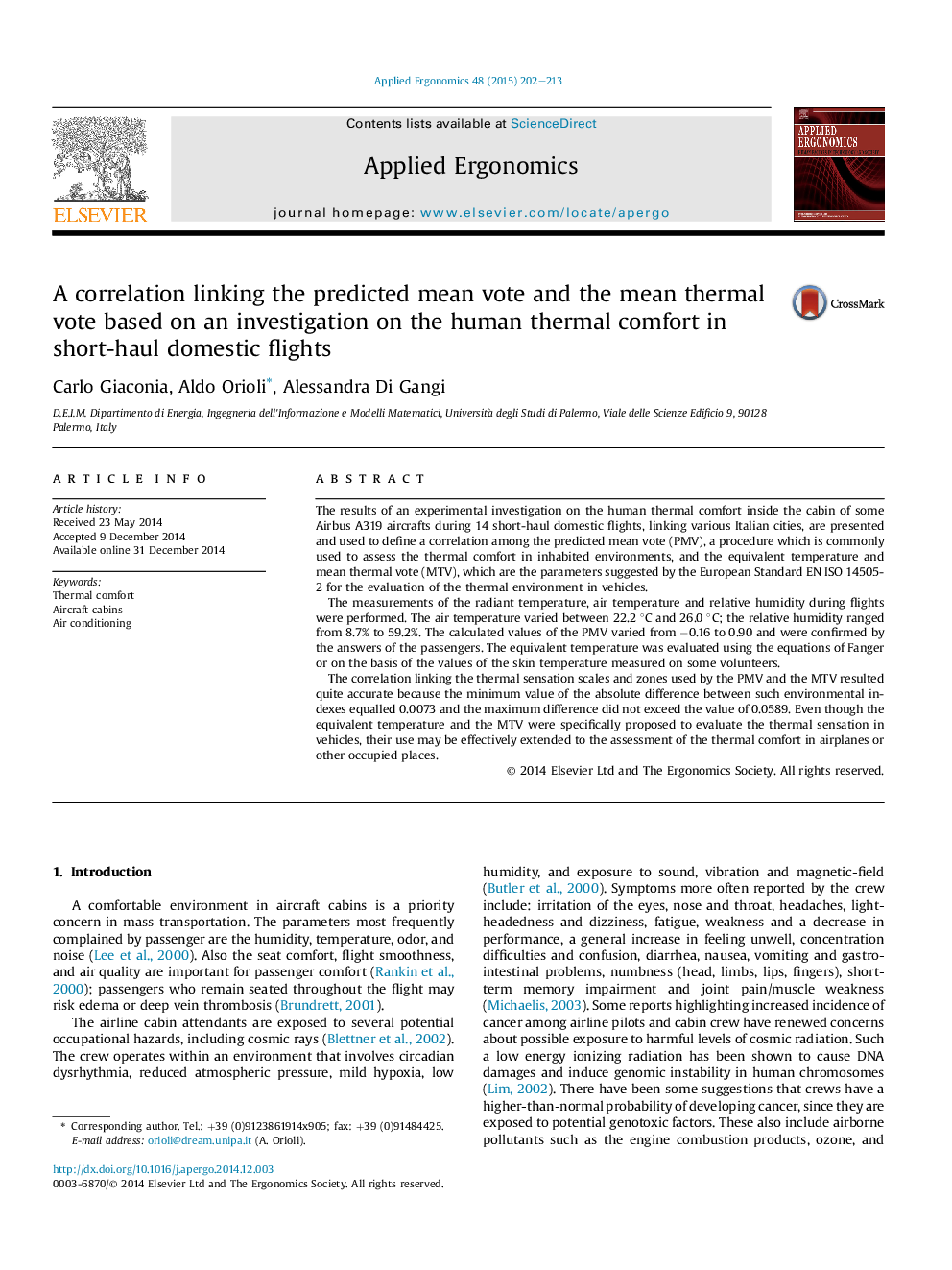| Article ID | Journal | Published Year | Pages | File Type |
|---|---|---|---|---|
| 550041 | Applied Ergonomics | 2015 | 12 Pages |
•An experimental investigation on the human thermal comfort inside the aircrafts was carried out.•A correlation among the PMV, the equivalent temperature and MTV was defined.•The correlation linking the thermal sensation scales and zones used by the PMV and the MTV resulted quite accurate.
The results of an experimental investigation on the human thermal comfort inside the cabin of some Airbus A319 aircrafts during 14 short-haul domestic flights, linking various Italian cities, are presented and used to define a correlation among the predicted mean vote (PMV), a procedure which is commonly used to assess the thermal comfort in inhabited environments, and the equivalent temperature and mean thermal vote (MTV), which are the parameters suggested by the European Standard EN ISO 14505-2 for the evaluation of the thermal environment in vehicles.The measurements of the radiant temperature, air temperature and relative humidity during flights were performed. The air temperature varied between 22.2 °C and 26.0 °C; the relative humidity ranged from 8.7% to 59.2%. The calculated values of the PMV varied from −0.16 to 0.90 and were confirmed by the answers of the passengers. The equivalent temperature was evaluated using the equations of Fanger or on the basis of the values of the skin temperature measured on some volunteers.The correlation linking the thermal sensation scales and zones used by the PMV and the MTV resulted quite accurate because the minimum value of the absolute difference between such environmental indexes equalled 0.0073 and the maximum difference did not exceed the value of 0.0589. Even though the equivalent temperature and the MTV were specifically proposed to evaluate the thermal sensation in vehicles, their use may be effectively extended to the assessment of the thermal comfort in airplanes or other occupied places.
